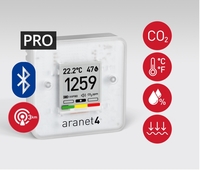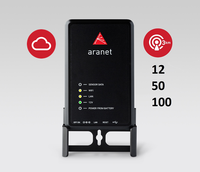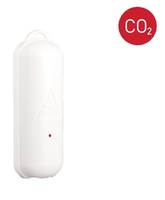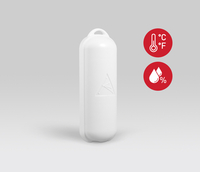Monitoring CO2 & Temperature in Schools
 Most people are aware that outdoor air pollution can impact their health, while indoor air quality related health risks are widely underestimated. The U.S. Environmental Protection Agency (EPA) studies indicate that indoor levels of pollutants may be even five times higher than outdoors. Besides, most of us spend about 90% of their time indoors with insufficient air exchange.
Most people are aware that outdoor air pollution can impact their health, while indoor air quality related health risks are widely underestimated. The U.S. Environmental Protection Agency (EPA) studies indicate that indoor levels of pollutants may be even five times higher than outdoors. Besides, most of us spend about 90% of their time indoors with insufficient air exchange.One of the main reasons for poor well-being indoors is the high concentration of carbon dioxide (CO2 ) that makes people anxious, sleepy and unable to concentrate.
Lately indoor air quality has been of a great concern for Istanbul Technical University Development Foundation’s Dr. Natuk Birkan Primary & Secondary School in Istanbul, Turkey. In order to improve air quality and children well-being, school board decided to deploy Aranet monitoring system.
The staff of Dr. Natuk Birkan Primary & Secondary School reported that during school lessons many students frequently seemed tired and had problems concentrating. The staff was concerned that indoor air quality and exceeded CO2 levels in classrooms might be causing the problem.
The main aim of the school board was to increase the productivity of the students, as well as improve the comfort level in the classrooms, by decreasing CO2 concentration indoors.
To ensure that the level of CO2 never exceeds the recommendations, the school introduced a pilot Aranet CO2 monitoring system in classrooms. The staff installed Aranet PRO with 3 Aranet CO2 sensors and 3 Aranet T/RH sensors.
There are 27 classrooms of 45sqm in the school. On average there are 20-24 students in each classroom during the lessons. Aranet wireless CO2 and temperature monitoring system was placed in 3 classrooms to monitor the CO2 levels and send alerts, when the desired CO2 levels were exceeded.
Aranet wireless monitoring systems detected that in some classrooms the level of CO2 could be as high as 3535 ppm, which is almost 4 times the recommended amount. Wireless temperature sensors also detected that occasionally the temperature in classrooms reached 28⁰C, which can have a significant impact on comfort levels indoors.
The staff of the school were able to monitor the air quality indoors and react accordingly to ventilate the classrooms when needed.
Ask A Question




 Aranet4 Pro
Aranet4 Pro Aranet Pro Base Station
Aranet Pro Base Station Aranet CO2 Sensor
Aranet CO2 Sensor Aranet T/RH Sensor
Aranet T/RH Sensor